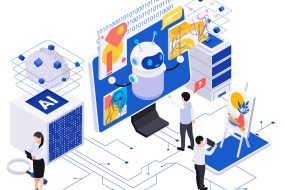
The Blasphemy of AI Research: A Nobel Academy’s Genius or a Misguided Attempt?
The Nobel Academy’s recent decision to award prizes for research using artificial intelligence (AI) has sparked a heated debate in the scientific community. While some hail this move as a genius step towards recognizing the transformative power of AI, others see it as a blasphemy that undermines the very principles of scientific inquiry. In this article, we’ll delve into the world of AI research and explore the implications of this decision.
The Rise of AI Research
AI research has been gaining momentum in recent years, with significant advancements in areas such as machine learning, natural language processing, and computer vision. The potential applications of AI are vast, ranging from healthcare and finance to education and transportation. However, the use of AI in research has also raised concerns about the role of human scientists and the validity of AI-generated results.
The Nobel Academy’s Decision
The Nobel Academy’s decision to award prizes for research using AI has been met with both praise and criticism. On one hand, it recognizes the significant contributions that AI has made to various fields of research. On the other hand, it raises questions about the role of human scientists and the validity of AI-generated results.
Use Cases of AI in Research
AI has been used in various research applications, including:
- Medical Research: AI has been used to analyze medical images, identify patterns in patient data, and develop personalized treatment plans.
- Climate Research: AI has been used to analyze climate data, identify patterns in weather patterns, and develop predictive models for climate change.
- Materials Science: AI has been used to analyze materials data, identify patterns in material properties, and develop new materials with specific properties.
Comparison with Human-Driven Research
AI-driven research has several advantages over human-driven research, including:
- Speed: AI can analyze large datasets much faster than humans, allowing for quicker insights and discoveries.
- Scalability: AI can analyze large datasets and identify patterns that may not be apparent to humans.
- Objectivity: AI can analyze data without bias, allowing for more objective results.
However, AI-driven research also has several limitations, including:
- Lack of Human Insight: AI may not be able to provide the same level of human insight and intuition that is often required in research.
- Dependence on Data: AI is only as good as the data it is trained on, and poor data quality can lead to poor results.
- Lack of Transparency: AI decision-making processes can be opaque, making it difficult to understand how results were obtained.
Features of AI-Driven Research
AI-driven research has several features, including:
- Machine Learning: AI uses machine learning algorithms to analyze data and identify patterns.
- Natural Language Processing: AI uses natural language processing to analyze text data and identify patterns.
- Computer Vision: AI uses computer vision to analyze image data and identify patterns.
Conclusion
The Nobel Academy’s decision to award prizes for research using AI has sparked a heated debate in the scientific community. While AI has the potential to revolutionize various fields of research, it also raises concerns about the role of human scientists and the validity of AI-generated results. As AI continues to play a larger role in research, it is essential to address these concerns and ensure that AI-driven research is transparent, objective, and reliable.













